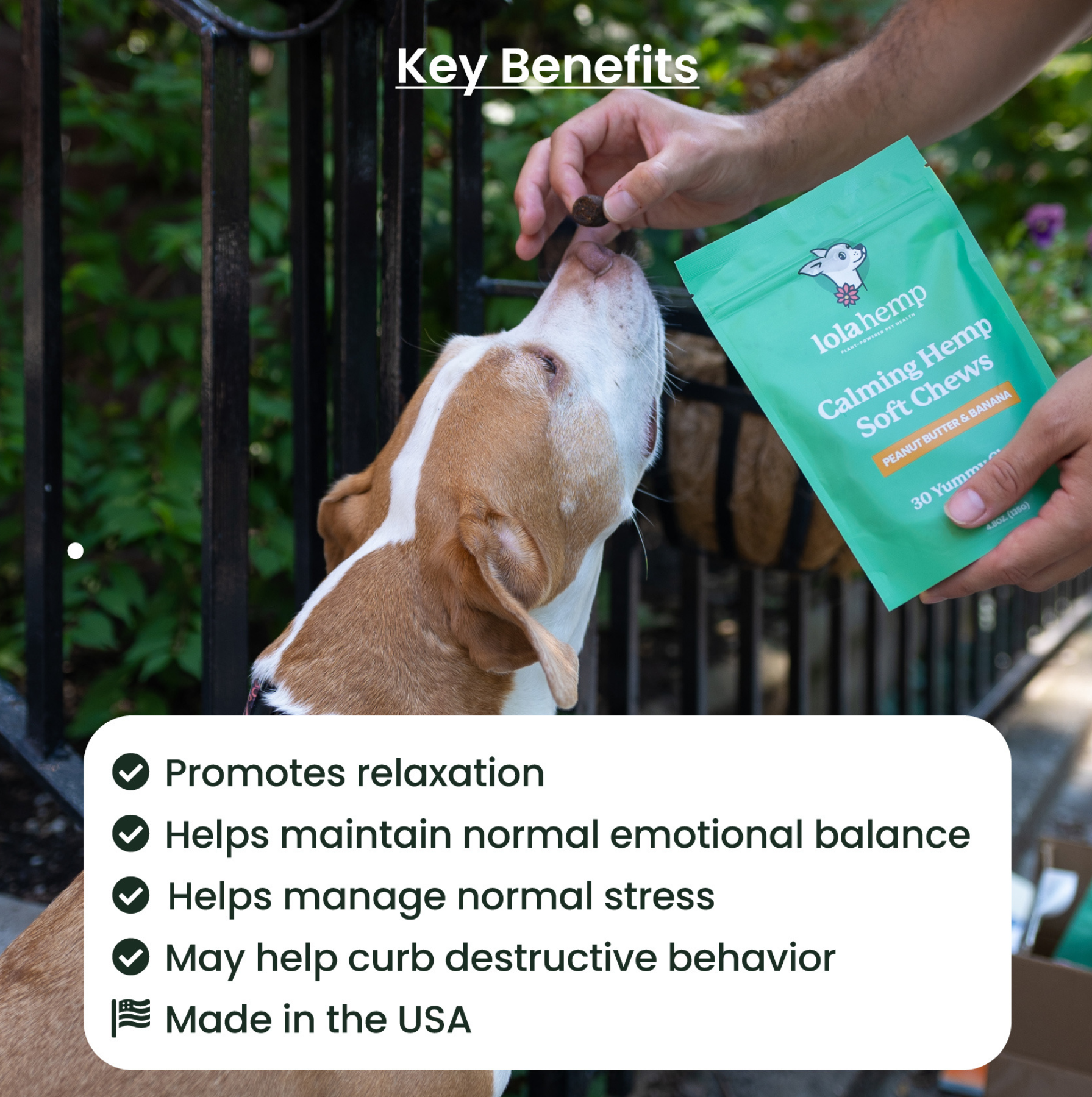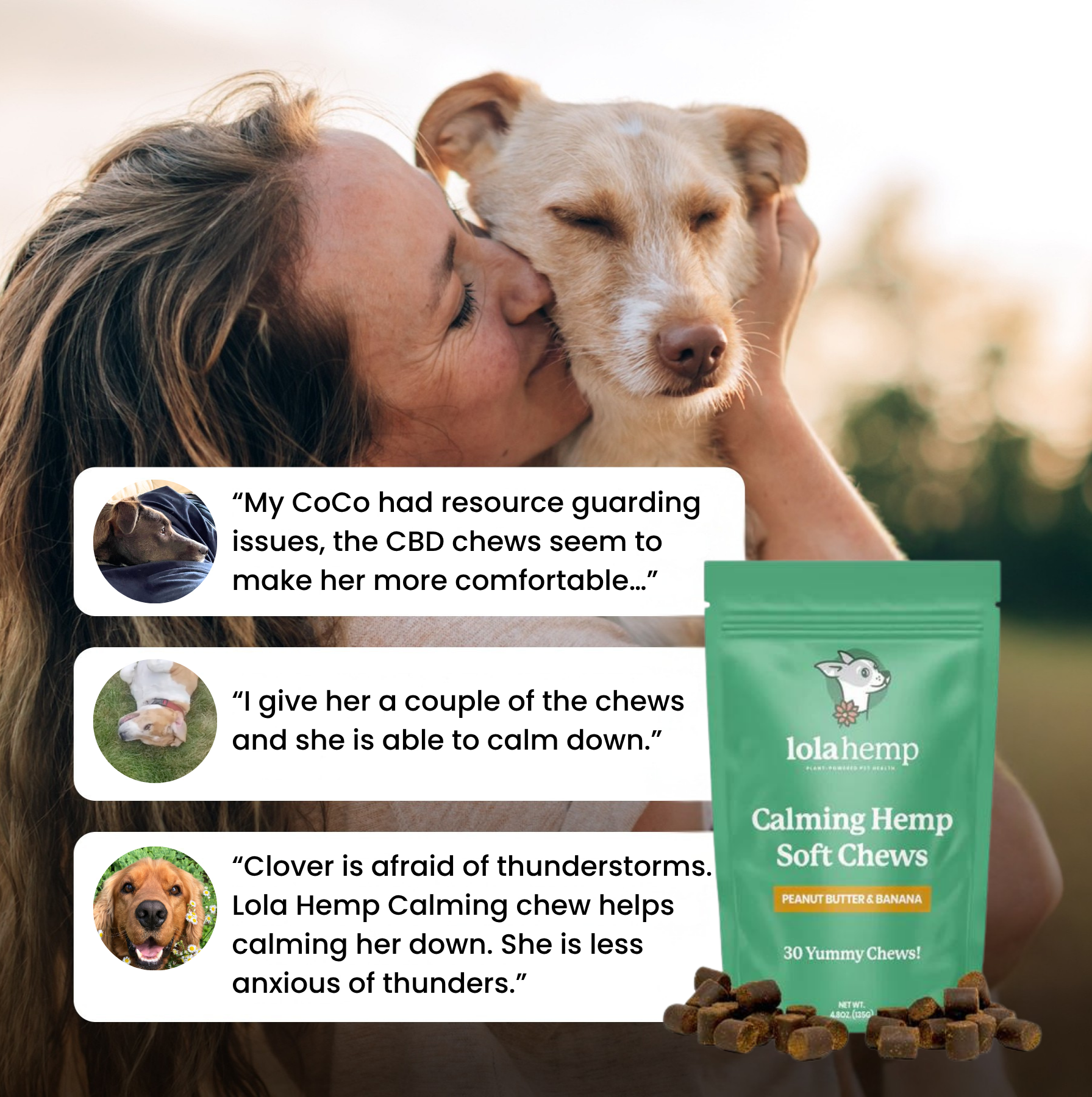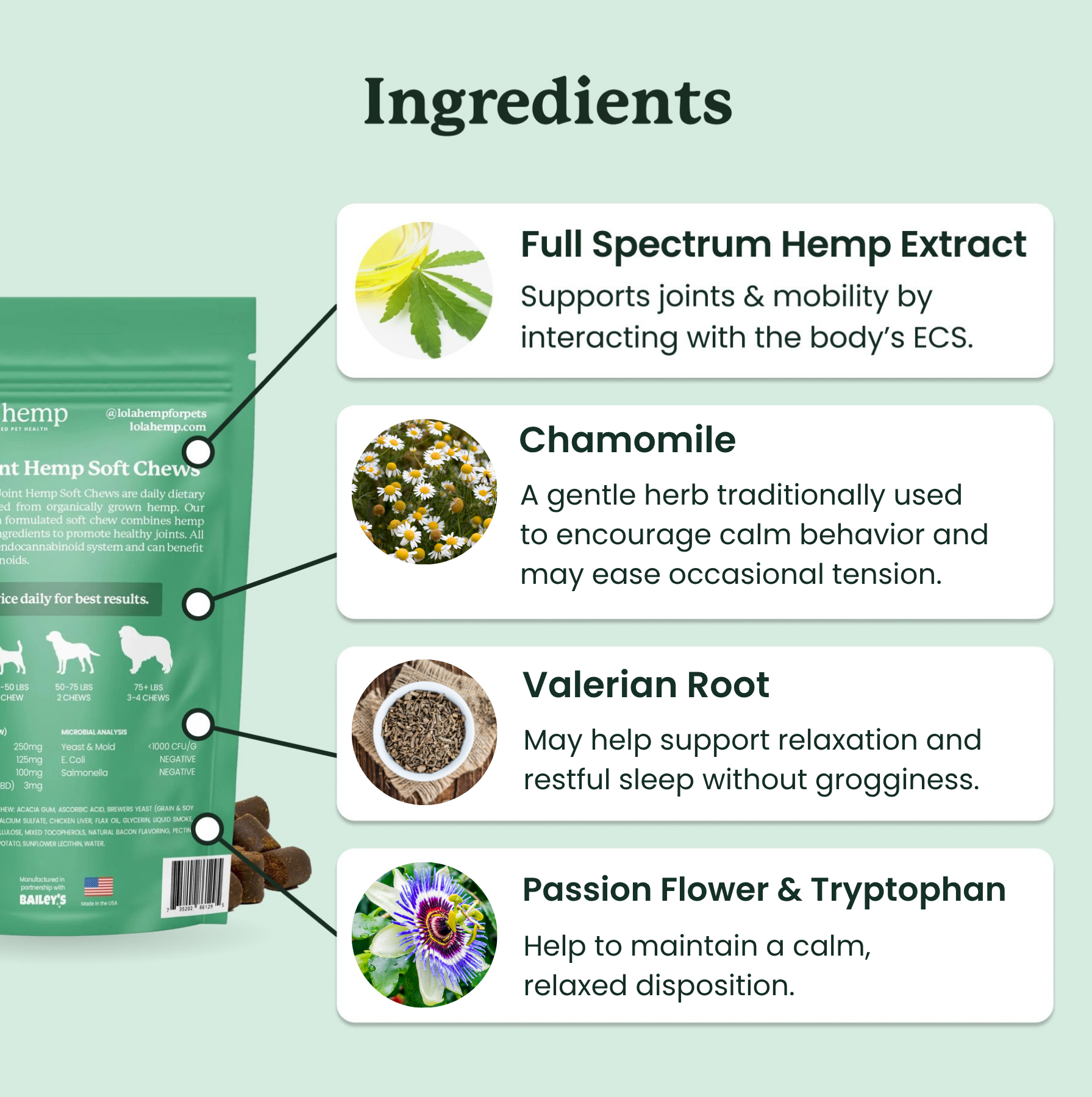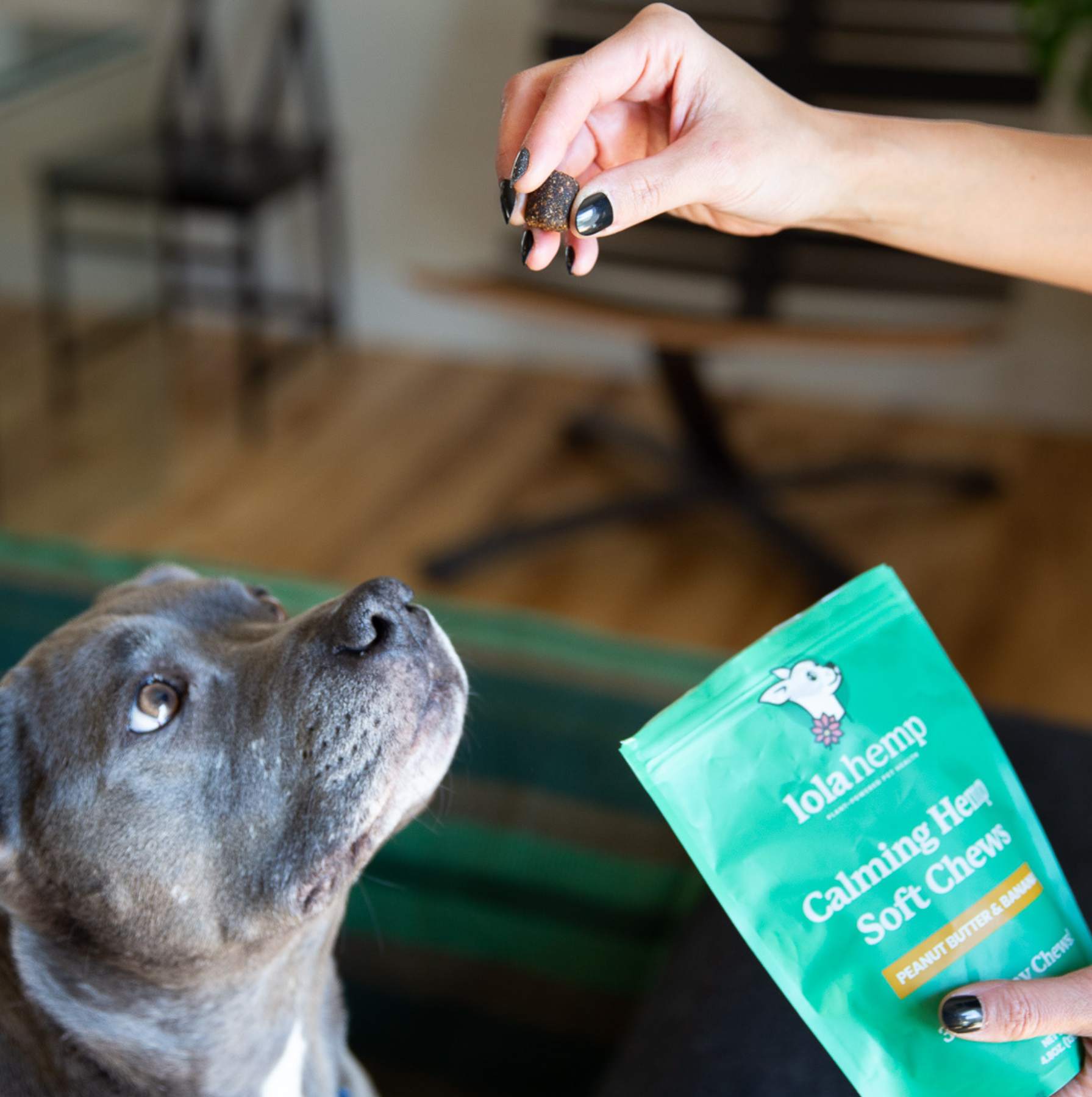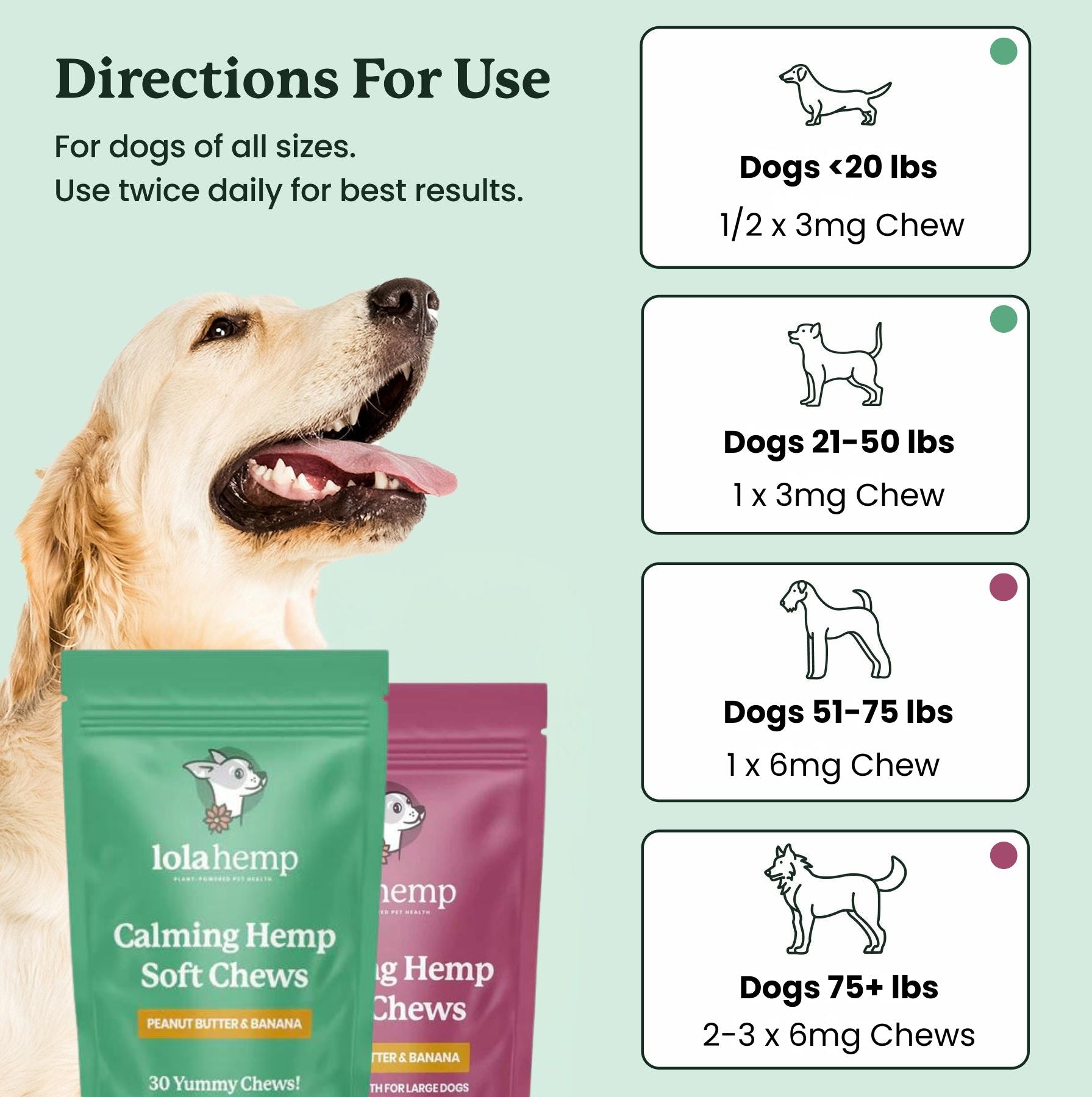As a neighbor, there are few things more distracting than a dog who barks all day long. On the one hand, you feel sorry for the distraught dog who feels the need to call out for hours on end.
On the other hand, you wish you could enjoy some peace and quiet. If you’re the owner of a dog who barks when you leave, I’m sure you feel sorry for your pooch as well as the neighbors who have to hear all that barking.
Fortunately, this isn’t a permanent behavior. There are things you can do to help your dogs (and your neighbors) relax. In this article, we’ll look at the possible reasons behind your dog’s excessive barking as well as a few solutions to the underlying anxiety your dog is feeling.
Let’s get started.
- Why Does My Dog Bark When Left Alone?
- Signs of Separation Anxiety
- How to Get Your Dog to Stop Barking When You Leave
- Natural Supplements Can Reduce Barking
- Additional Options That Can Help
- Mistakes That Dog Owners Make
- So, What Have We Learned?
- Frequently Asked Questions About Dogs Barking When Left Alone
Why Does My Dog Bark When Left Alone?
Many dogs bark a little bit throughout the day. It’s pretty normal for that to occur. If you’ve heard that your dog is barking “all day” but it seems totally out of character, you might want to do some investigating.
Try leaving your house and waiting at a distance that your dog won’t be able to detect. If your dog barks constantly while you’re gone, it shouldn’t take long for them to start up. If you don’t notice anything after a significant amount of time passes, it’s worth asking your neighbors to explain in some more detail.
When is it that he or she starts barking, and when do they stop barking? Is it the same time each day? How long does the barking go on for? The answers to these questions might provide some insights as to what the barking triggers are.
The following are some common reasons for excessive barking. We’ll explore solutions further down in the article.

Boredom Can Inspire Barking
Dogs are liable to get pretty bored when you’re not around. If they’re home alone for long periods of time, they might just get so bored that they start barking. Maybe they’re calling out to you or whoever will listen, saying “please play with me! I’m bored!”
Separation Anxiety Can Cause Barking
Anxiety is very common in dogs, particularly shelter animals. Our pets deeply need us. They also love us deeply.
We’re their pack leaders, and we’re their source of comfort, security, protection, and food. Animals might worry when their leader goes away out of fear that they’ll never come back.
For animals who have been through abuse and neglect, that sense of security becomes even more important. Your pet might remember when their previous owner left them and never came back, and they’re worried that you’ll do the same.
Separation anxiety doesn’t always go that deep, however. Some animals might simply get concerned when you leave and bark excessively in response to their fear and discomfort.
According to Scientific Reports, most dogs have a genetic predisposition to show anxious behaviors.
The bottom line is that, in animals, separation anxiety manifests as a confusing, deeply uncomfortable sense of insecurity. For some dogs, that feeling is too powerful, and the only thing they can do is communicate their feelings by barking.
Signs of Separation Anxiety
If your dog barks all day long, there’s a pretty could chance that separation anxiety is part of the mix. Here are a few signs of separation anxiety.
Signs of Separation Anxiety in Dogs:
- Destructive behavior
- Shivering or trembling
- Whimpering or whining
- Pacing back and forth
- Urinating or deficating indoors
- Symptoms of depression
- Uncontrollable excitement when you get home

These symptoms aren’t always caused by separation anxiety, but if you notice one or more of these things there’s certainly something your dog is trying to communicate to you.
There’s also a chance that these symptoms could indicate an underlying medical issue.
Why Do Some Dogs Get Separation Anxiety?
Apart from the trauma of abuse or neglect, there are a few reasons that dogs might develop separation anxiety.
A change to your dog’s routine or environment can spark separation anxiety. That could mean a new home, a new baby in the house, a pet sibling introduced, a pet sibling lost, or some signficant change to your dog’s lifestyle.
For example, let’s say you’ve just started to train your dog to use a crate. The first few weeks might be very unusual for your dog and could contribute to a fealing of uneasiness when they’re left alone.
According to the University of Lincoln, "Separation anxiety in dogs should be seen as a symptom of underlying frustrations rather than a diagnosis..."
How to Get Your Dog to Stop Barking When You Leave
The first step for those with dogs who are exhibiting numerous unusual behaviors (listed above) is to see a veterinarian. Check if there is an underlying illness that’s causing your pet discomfort contributing to the excessive barking.
In most other cases, excessive barking is caused by boredom or separation anxiety.
We’ll lay out a few steps for dogs in both of those categories.
How to Help Dogs Facing Boredom
For dogs that are simply over-energized and bored while you’re gone, start by incorporating exercise before you leave. A little play time in the living room might not be enough to do the trick, however.
Consider going outside to the park and playing fetch or working your dog out in whatever way they like best. You could also go for a walk or even a short jog before you get ready to head out to work.
This type of exercise serves two purposes:
first, it simply releases some of that excess energy and holds your dog over a little longer, preventing them from getting bored as quickly.

Second, it satisfies your dog’s desire to spend time with you right when they wake up. They likely have a lot of pent up excitement in the morning and want nothing more than to play and run around with you. So, satisfying that need will prevent your dog from carrying the desire over into the rest of the day.
As an example, imagine you’re a kid just waiting to go to a theme park with your parents. You fall asleep dreaming of rides and candy, and you wake up brimming with excitement about how much fun you’re going to have that day.
Then, your heart sinks when you look outside and it’s raining. Plans cancelled. All that energy you carried into the morning doesn’t go away, though, and you probably throw a tantrum or burst with energy.
The same thing happens when your dog sees you walk out the door.
Another thing you can do is provide mental stimulation for them during the day.
A short search on Google or Amazon will turn up hundreds, if not thousands of brain-teezing and time-consuming toys. Kong chew toys filled with treats are another classic option. If those options don't sound good to you, here is a veterinarian examination of the best canine anxiety vests on the market.
How to Help Dogs with Separation Anxiety
Separation anxiety is a little trickier to solve, but it’s still very possible to reroute your dog’s behavior.
Note that a bout of separation anxiety begins right away in the morning—not just when you step out the door. Your series of behaviors before leaving are recognizable to your dog, and they’ll likely start getting anxious when they see that your routine is starting.
A good place to start is to either hide your morning routine from your dog as much as possible, or to start desensitizing your dog to morning triggers throughout the day.
For example, if you always sit in the same place to tie your shoes before leaving for work, sit there and tie your shoes at times when you don’t plan on leaving. If you perform the action and fail to leave, your dog will slowly stop associating it with your absence, thereby lessening the trigger.
Identify your dog’s triggers and start desensitizing. At the same time, practice separation time with your dog.
Leave the house for a short period of time, then return. Each day, extend the amount of time outside before coming back in. A gradual increase in duration will ease your dog out of their anxiety, and establish the fact that you’re truly coming back when you leave.
Eventually, they might remain comfortable when you leave for long periods of time.
As you go through this process, it should reduce your dog's barking. Their discomfort manifests in the form of barking, so it follows that the barking diminishes along with the discomfort.
Natural Supplements Can Reduce Barking
While there aren’t supplements made specifically to stop barking, there are certainly things that can keep your dog calm throughout the day without “zombifying” them with side effects.
Dog owners have had success with Ashwagandha, L-Theanine, and Magnolia bark extract. Another excellent option is hemp oil, which we'll discuss a little later on.
Additional Options That Can Help
On top of the ideas above, dog owners often see improvements in their dog after employing the following strategies:
- Investing in a doggy daycare program
- Hiring a dog sitter
- Hiring someone to walk the dog each day
- Coming home to visit the dog during your lunch break
- Allowing neighbors to come over and spend time with the dog in order to release excess energy
These all involve a monetary investment or a little extra time during the day, but they’re well worth it when your dog feels more calm and comfortable throughout the work week.
Mistakes That Dog Owners Make
There are a couple of key things that dog owners do wrong while attempting to calm their pet’s distress.
The first is to punish the “bad behavior.” When your dog is anxiety-ridden during the day and acting out by tearing into furniture or going to the bathroom inside, the last thing you should do is punish them when you get home.
For one, the behavior occured before you got home so punishing your dog upon arrival will only establish a negative association with you coming home and produce more anxiety. In other words, your dog won’t realize your punishing them for the bad behavior.
Further, it’s the anxiety that causes this type of behavior rather than the character or intentions of your dog.

When a person or a dog is emotionally activated, it’s often the case that the higher brain is dominated by the emotional centers of the brain. This leads people and pets to do things that they wouldn’t do if they were calm and collected. If your dog is anxious all day, they might get overwhelmed and act in ways that don’t line up with their personality.
So, don’t punish your pet for something they didn’t really want to do. Instead, invest time and energy into easing their anxiety. If you keep falling short, an animal behaviorist might be able to guide you in the right direction.
So, What Have We Learned?
Dogs bark when we leave in response to discomfort of some kind. They don’t bark because they’re “bad dogs,” and it’s not always lack of training that makes them act out in this way.
If your dog barks when you leave and doesn’t stop, odds are that there is an underlying health condition, a feeling of excessive boredom, or separation anxiety to blame. So, identify the root cause, invest time to make your dog feel more comfortable, and hire an expert if you fall short.
Good luck, you’ve got this!
Frequently Asked Questions About Dogs Barking When Left Alone
Why does my dog bark when I leave the house?
Your dog may bark from boredom, separation anxiety, or frustration. Dogs are social animals, and being left alone can cause stress or a desire for attention.
How can I tell if my dog’s barking is caused by separation anxiety?
Signs include pacing, destructive behavior, house soiling, excessive drooling, and whining when left alone. Video monitoring can help confirm if the barking starts soon after you leave.
What can I do to stop my dog from barking all day?
Provide exercise before leaving, offer interactive toys, establish a consistent routine, and gradually train your dog to feel comfortable being alone. In severe cases, seek help from a behaviorist or veterinarian.
Can CBD oil or natural supplements help reduce barking?
Yes, supplements like CBD oil, Ashwagandha, and L-Theanine may help promote relaxation and reduce anxiety-related barking. Always consult your vet before introducing new supplements.
Should I punish my dog for barking when I’m away?
No, punishment increases anxiety and makes the behavior worse. Focus on addressing the cause, such as fear or boredom, through positive reinforcement and consistent training.


